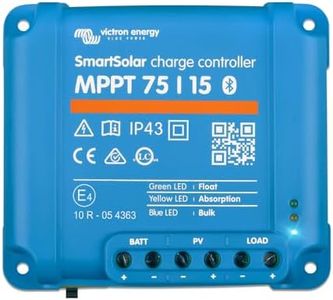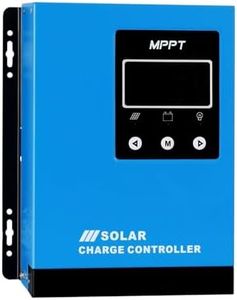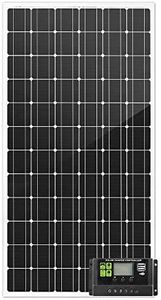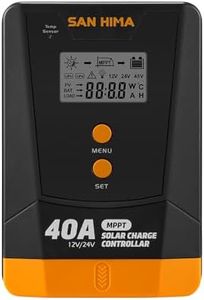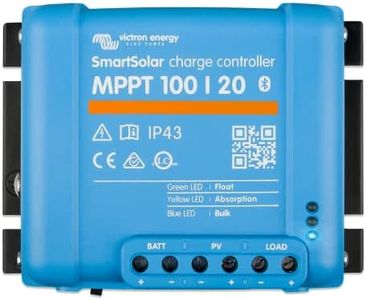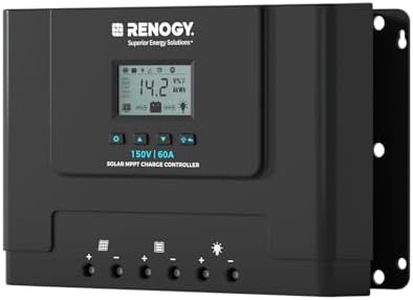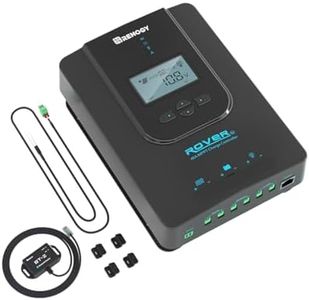We Use CookiesWe use cookies to enhance the security, performance,
functionality and for analytical and promotional activities. By continuing to browse this site you
are agreeing to our privacy policy
10 Best Solar Charger Controllers
From leading brands and best sellers available on the web.Buying Guide for the Best Solar Charger Controllers
Choosing the right solar charger controller is a key step in building a solar energy system to charge batteries safely and efficiently. A solar charger controller acts like a middle-man, regulating the flow of electricity from the solar panels to the battery—this makes sure your battery doesn't get overcharged or damaged, and helps get the most energy from your solar setup. To find the best fit, it's important to understand some main features, how they relate to your system size and goals, and what different types bring to the table.Controller Type (PWM vs MPPT)Solar charger controllers mainly come in two types: PWM (Pulse Width Modulation) and MPPT (Maximum Power Point Tracking). This feature determines the way the controller manages the charge from solar panels to your battery. PWM controllers are simpler and work well in smaller, basic setups, typically when the solar panel voltage is very close to the battery voltage. MPPT controllers are more advanced and can turn excess solar voltage into extra charging power, which means more efficient charging, especially for larger or more complex systems. If your setup is small and straightforward, PWM might be enough, but for bigger systems or where solar and battery voltages differ, MPPT is usually a better long-term choice.
Maximum Input VoltageThis refers to the highest solar panel voltage the controller can handle without being damaged. It’s important because your solar panels together may produce a voltage higher than the controller can take, especially if you connect panels in series. Controllers come with various voltage ratings, often 12V, 24V, 48V, or more. Choose a controller that supports at least the maximum voltage your solar panels can produce, and leave a safety margin for temperature changes. Matching this to your solar panel setup helps prevent malfunctions and ensures stable charging.
Maximum Charging CurrentThis spec shows the highest amount of current (measured in amps) the controller can send to the batteries at a time. More panels or more powerful panels mean more potential current. Controllers are typically rated anywhere from 10A to 60A or more. For safety and performance, pick a controller rated for more amps than the highest you expect from your solar panels. Consider your solar array size and future expansion—if you think you might add more panels, it’s smart to pick a higher current range.
Supported Battery TypesControllers can work with different types of batteries, like Flooded, Sealed (AGM), Gel, or Lithium. This spec means the controller can properly manage charging for the battery chemistry you’re using, as each battery type has its own charging preferences to maximize life and safety. Check your battery’s type, and ensure the controller supports it—many controllers have a button or menu to select the right one. If you haven’t picked a battery yet, look for flexibility, so you can change the type easily later.
Display and Monitoring FeaturesControllers may offer basic indicator lights, or upgraded displays that show real-time information about voltage, current, and battery status. Some also support remote monitoring through phone apps or computers. These features help you keep an eye on how your system is working and quickly spot any problems. If you want to regularly check your system or like more data, look for more advanced displays or app support. For very simple or hidden setups, basic indicators might be enough.
Protections and Safety FeaturesGood solar charger controllers come protected against issues like overcharging, short circuits, overheating, or reverse polarity (connecting things the wrong way around). These safety features help protect your panels, batteries, and the controller itself from accidental damage. Details vary—some controllers offer all-in-one protections, others less. If your setup will run unattended or in harsh conditions, more robust protection features are helpful for peace of mind.

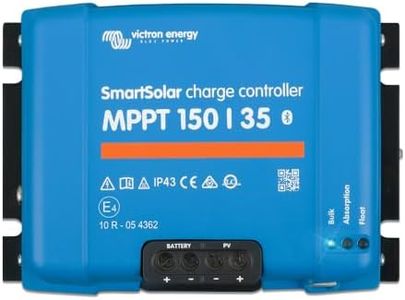

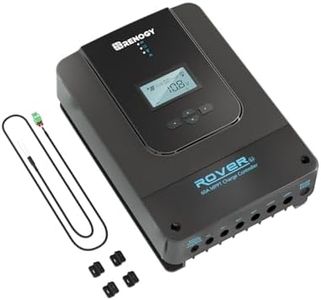
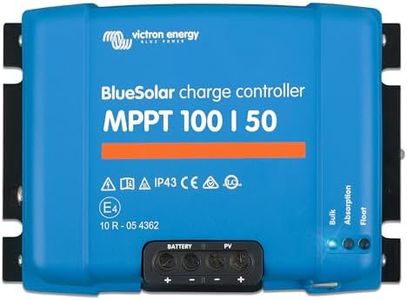
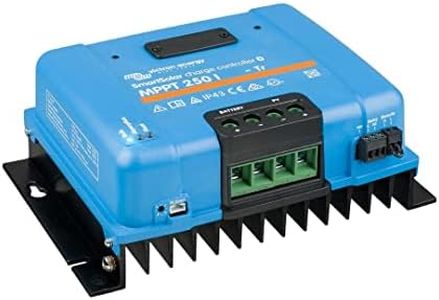
![EPEVER MPPT Solar Charge Controller 40A 150V PV Solar Panel Controller Negative Ground W/ MT50 Remote Meter + Temperature Sensor PC Monitoring Cable[Tracer4215BN]](https://images-proxy.bestreviews.guide/MX8lwAIsGzyLFhylxgg6wtQX8rU=/0x300/https://m.media-amazon.com/images/I/41Piu7aIW4L._AC_CX679_.jpg)
